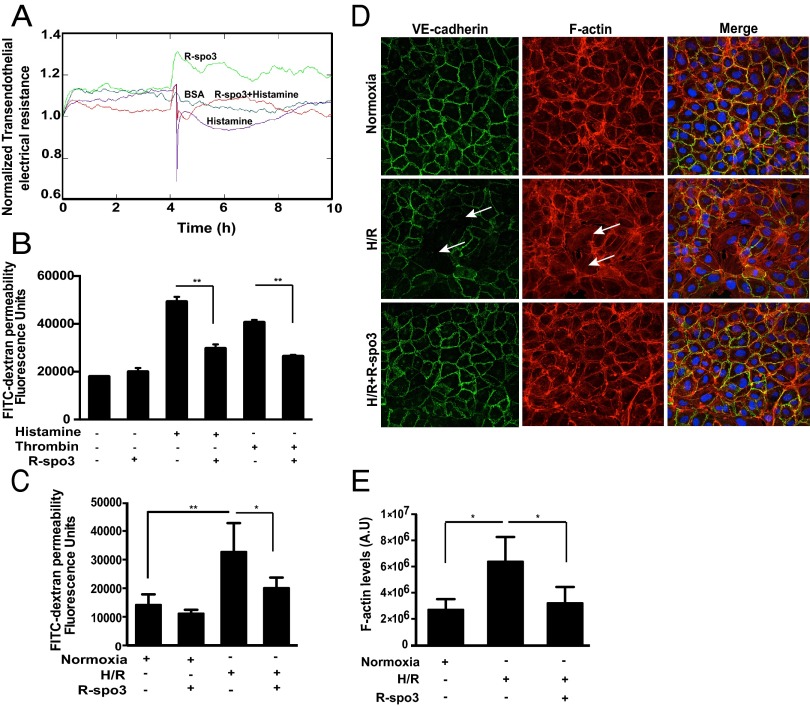Fig. 5.
R-spo3 tightens endothelial cell junctions and preserves barrier function. (A) Effect of R-spo3 on endothelial junctional integrity, as measured by transendothelial electrical resistance (TEER) in HUVECs exposed to different conditions such as BSA, histamine, R-spo3, and R-spo3 + histamine. (B) R-spo3 pretreatment decreased histamine and thrombin-induced endothelial permeability in HUVECs measured using FITC-dextran passage (n = 4, **P < 0.01). (C) R-spo3 pretreatment decreased H/R-induced endothelial leakage in HUVECs measured using FITC-dextran passage (n = 5, *P < 0.05, **P < 0.01). (D) Effect of R-spo3 on localization of VE-cadherin (adherens junction marker) and F-actin was evaluated by immunofluorescence and phalloidin staining in HUVECs subjected to H/R. H/R resulted in the loss of the VE-cadherin at the cell junctions and increased the number of stress fibers (arrows), whereas R-spo3 preserved VE-cadherin and F-actin at the cell periphery and decreases the formation of stress fibers in cells subjected to H/R. One representative image of three experiments is shown. (E) Quantification of F-actin content in HUVECs under normoxic, H/R, and H/R + R-spo3 conditions. Cumulative data from three independent experiments *P < 0.05.

